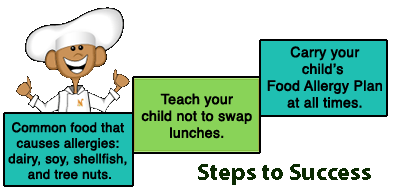
If your child has a gluten allergy, sensitivity, or full-blown celiac disease, you may be concerned if they are receiving proper nutrition because of the sheer amount of foods they CANNOT consume. However, it is reassuring to know that those who follow a gluten-free diet properly can actually be more nourished and healthier than the average gluten-consuming person.
Why is that?
To avoid gluten, your child is forced to look at gluten-free options at home and when eating out. This means not consuming anything with wheat, rye, barley. What this is also means is avoiding any foods that contain their derivatives, such as:
Is anything on this list surprising? The common theme here is that these foods are, for the most part, more processed. If we focus on foods that are naturally gluten-free, we find that the opportunity to ingest a variety of nutritious whole foods increases dramatically:

Take note that it is also easy to fall into the trap of consuming items that are labeled “gluten-free” at the supermarket, but more often than not, taking a look at the ingredients list in the back reveals that the alternatives provided are anything but healthy. Often, manufacturers use highly-processed rice flour or sugars to compensate for the lack of grains and to recreate a familiar item, such as a piece of bread. You and your child would be better off experimenting with healthier and less processed wheat flour alternatives, such as:
If you need gluten-free inspiration, you will be pleased to know there are dozens of helpful and health-conscious, gluten-free recipe blogs on the internet. Here is a small list compiled by thekitchen.com:
Following a whole foods-based, gluten free diet will ensure that your child receives optimal nutrition while protecting his or her sensitive digestive system. Teaching them what items to look for and what to avoid when alone will set them on a path for a healthy and well-nourished future.

0 Comments